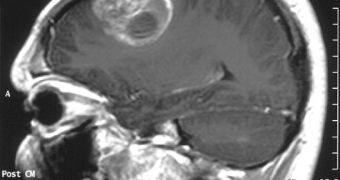A new research concluded that it would be far easier for oncolytic viruses to destroy cancer cells, if they were associated with a bacterial enzyme that would help them penetrate the deadly brain tumor.
Researchers at the Ohio State University Comprehensive Cancer Center-Arthur G. James Cancer Hospital and Richard J. Solove Research Institute who carried out the study, said that this enzyme called chondroitinase, helps the anti-cancer virus pass through the protein molecules that fill the space between cells and block the movement of the virus through the tumor.
The tests were conducted in animals transplanted with human glioblastoma – the most frequent and deadly form of brain cancer.
The results showed that the virus along with the enzyme, improved survival by 52% compared to controls, and in some cases, even completely eliminated the tumor.
Study leader Balveen Kaur, associate professor of neurological surgery, and colleagues, explained that, in one experiment, they injected human glioblastoma cells under the skin of eight mice, and then, after the tumors developed, treated them with the enzyme-armed virus.
The mice survived an average of 28 days, and after 80 days, two of them remained tumor-free, compared to control mice treated with the virus lacking the enzyme, which survived 16 days.
In another experiment, mice with human glioblastomas transplanted into the brain survived 32 days compared to 21 days for control animals – a 52% improvement, and again two mice lived over 80 days and presented no tumor afterwards.
The explanation is that the enzyme-laden virus had penetrated tumors in the animals’ brain significantly better than the enzyme-free control virus.
Kaur says that “overall, our results indicate that an oncolytic virus armed with this enzyme can have a significantly greater anticancer effect compared with a similar virus without the enzyme.”
The research proves “for the first time that an oncolytic virus with this enzyme can spread more effectively through the tumor and underscores the potential of using chondroitinases to enhance the capacity of oncolytic viruses to destroy cancer cells,” she adds.
This enzyme is derived from the intestinal bacteria called Proteus vulgaris, and it basically removes sugar chains that branch from molecules called proteoglycans, filling the narrow spaces between cells.
By removing these branches, the enzyme clears a path that helps the virus spread through the tumor.
This research was supported by funding from the National Institute for Neurological Disorders and Stroke, and the results were published online in the journal Clinical Cancer Research.

 14 DAY TRIAL //
14 DAY TRIAL //